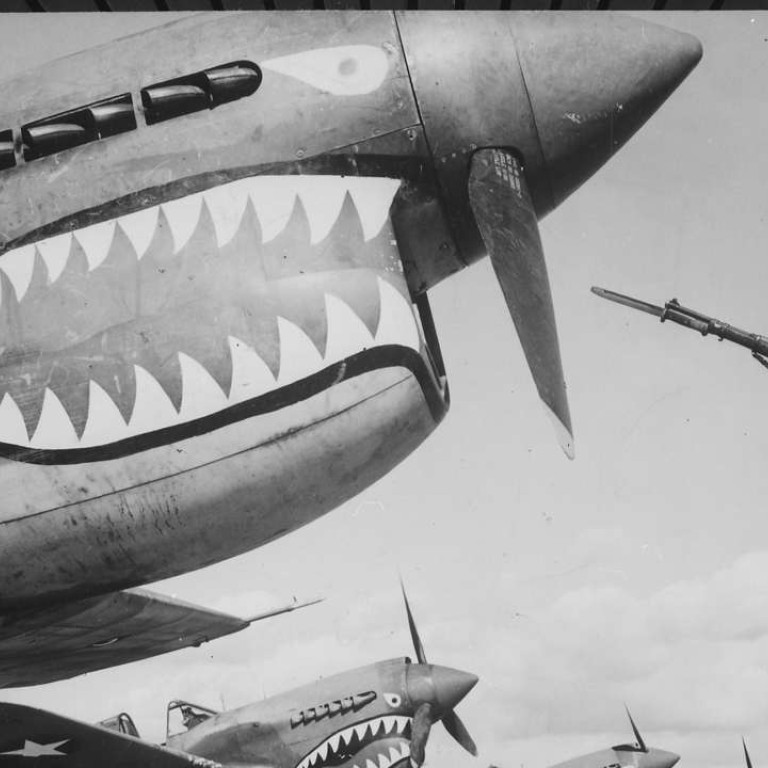
Book review: When Tigers Ruled the Sky vividly evokes Flying Tigers’ war with Japan
They were ‘the soundest investment China ever made’ - American outlaw pilots hired to fight the Japanese. Historian’s book recalls the bravery of the wildly outnumbered flying aces over China and Burma during the second world war

When Tigers Ruled the Sky: The Flying Tigers: American Outlaw Pilots over China in World War II
by Bill Yenne
Berkley Publishing Group
4/5 stars
Posing as students, bank clerks and even clergymen, they served as airborne mercenaries for China. Instantly recognisable by the fanged symbol adorning their dogged P-40 planes, the Flying Tigers caused a sensation on the back of prodigious success.
Wildly outnumbered, the American aces defied the odds, spurring a Chinese minister to brand them “the soundest investment China ever made”. Prowling the skies over China and Burma, the underdogs downed hundreds of Japanese planes, losing just a dozen themselves. Their secret: the regimen imposed by their commander, retired US army captain Claire Lee Chennault, whose drills began at 7am.
“Make every bullet count. Never try to get all the Japanese in one pass. Hit hard, break clean, and get position for another pass,” historian Bill Yenne quotes Chennault as saying in his new book, When Tigers Ruled the Sky.
Chennault’s hard-charging outlaw squadron emerged from the strained lull before Pearl Harbour. During the lull, China’s first lady, Madame Chiang Kai-shek, contracted Chennault to survey China’s air force, as friction between China and Japan grew. Chennault, who arrived in 1937, found that because of poor, Italian-run training, the fledgling force was hopelessly incompetent.
After serving as a consultant to the Chinese air force for four years, Chennault recommended recruiting an aerial American foreign legion. The idea sounded crazy – the US had yet to declare war on Japan – but the scheme went ahead with the backing of US president Franklin Delano Roosevelt, who wanted to save China from the Japanese war machine that had captured most of China’s key cities, killed millions of innocents, and ravaged China’s capital in the Rape of Nanking.
Chennault duly assembled a cadre of military idealists and daredevils: some noble, others scoundrels but all top-notch adventurers, according to Yenne.
“When they sailed beneath the Golden Gate Bridge in the final unsettled months before the United States went to war, they did so having cut all ties with the American military establishment as an imposer of discipline or as a source of supplies. They were on their own,” Yenne writes.

His gripping chronicle tracks how the outliers gelled into one of the most formidable forces ever created. Officially called the American Volunteer Group (AVG), the ambush-geared organisation shielded China’s provisional wartime capital, Chungking, and fought about 50 epic battles against hugely lopsided odds.
But the AVG never lost a contest, according to Yenne. During its seven-month “undefeated season”, from mid-December 1941 until mid-July 1942, it destroyed 299 Japanese aircraft – each confirmed Japanese plane downed earned the ace responsible US$500 from the Chinese government, a fortune in those days.
Despite being so richly rewarded, the Flying Tigers dissolved that July, corroded by establishment scorn for accepting bounties, but lived on as icons. Their inspired feline nickname still resonates, making them fine fodder for the prolific and ambitious author with an eye for a great yarn.
In fact, Yenne is responsible for more than 10 novels and three dozen non-fiction books on the likes of Lakota Native American tribal leader Sitting Bull and Greek conqueror Alexander the Great. Last year, Yenne released a book on “the most ambitious assassination scheme ever thwarted”, called Operation Long Jump.

When Tigers Ruled the Sky vividly evokes how it feels to be jumped – pounced on by a “Zero” coming out of the sun. Often, only well after the clatter has subsided, do Madame Chiang’s angels see that their P-40s have been dinged. The narrative abounds in miraculous scrapes.
The most striking big-picture twist plays out in the natural amphitheatre of the Salween Gorge, near Baoshan in Yunnan: the gateway to Kunming, even Chongqing. Overlooked by historians, the AVG’s actions at the gorge in May 1942 may well have changed Chinese history by halting an otherwise unstoppable Japanese attack, Yenne writes.
The squadron’s mission, which he details incisively, was to target the banks of the gorge across which a key road snaked. As the squadron’s bombs erupted at the top, a road section crumbled and avalanched into the switchback below.
“In turn, a larger swath of rock and crumbling roadway crashed down onto the switchback below that, and onto those farther beneath. It was like a stack of vertically falling dominoes, each more massive than the one above. Tonnes of falling rock and dirt snowballed into tens of tonnes of sliding gorge face dropping away from the cliff face like a calving glacier,” he writes.
Hundreds of Japanese troops and dozens of vehicles were swept downhill with the plunging rocks, to be buried in a swirling heap, he adds. Cinematic indeed.
Yet Yenne avoids glorifying war. In a heartbreaking episode, an ace named Tex Hill braces to tell the pregnant bride of a veteran he convinced to stay in China two weeks longer that her husband is dead. A tough call even for a battle-hardened soldier of fortune.
